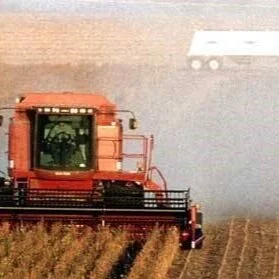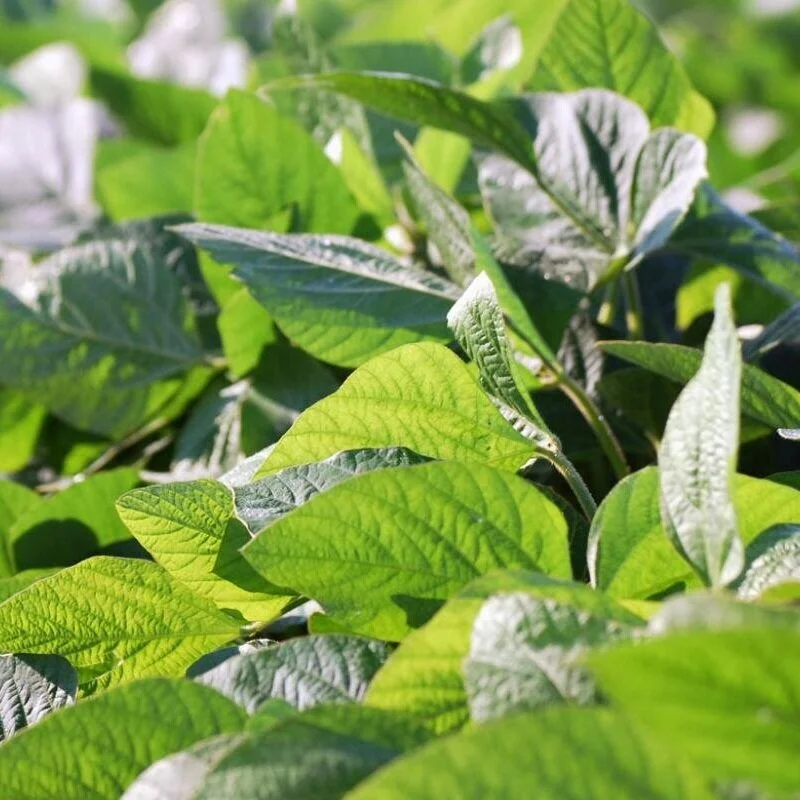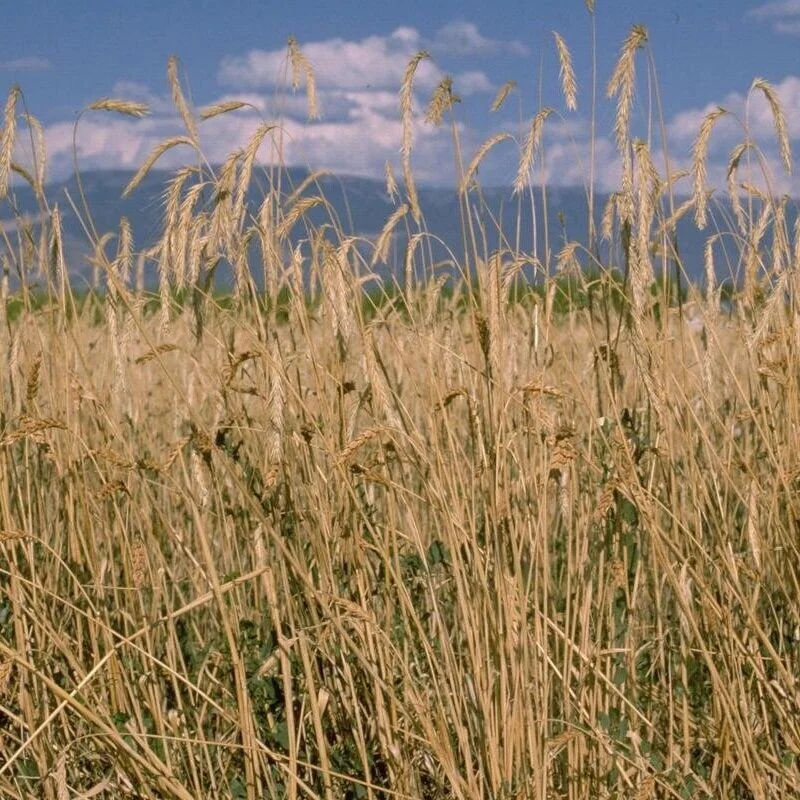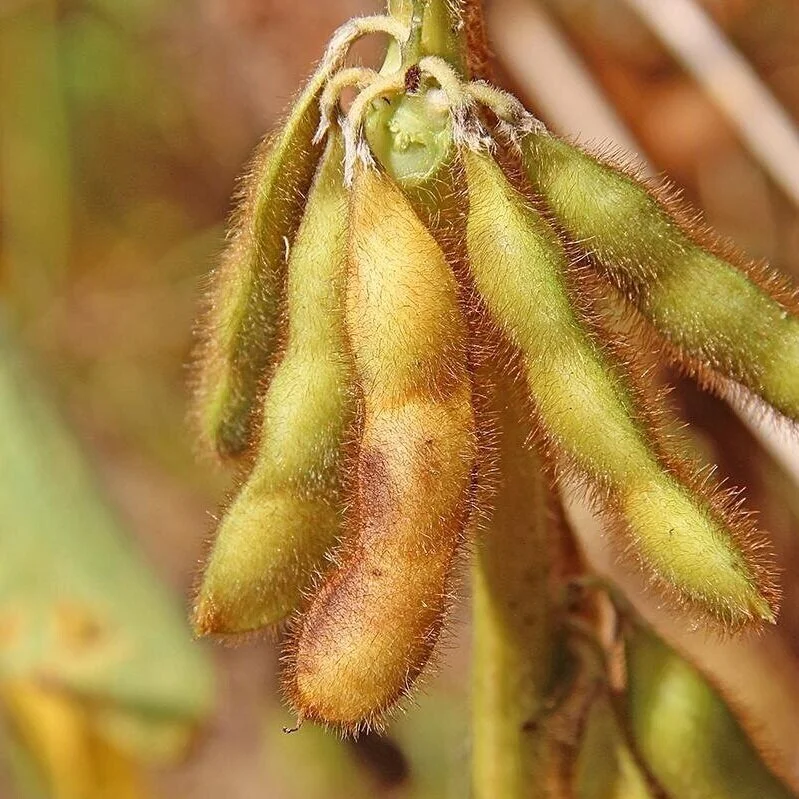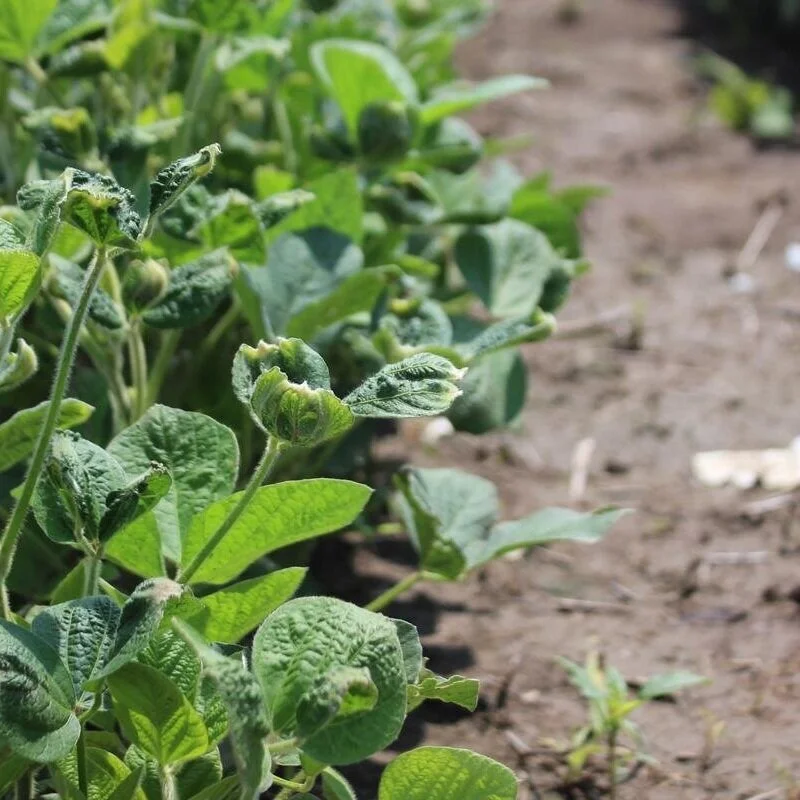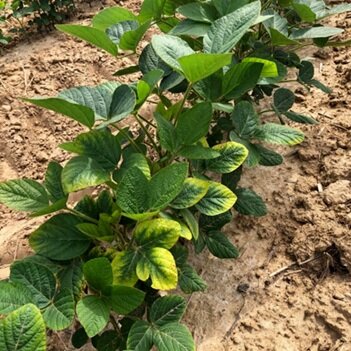Louisiana Soybean Crop Needs Moisture In Some Areas
Louisiana soybean producers had some dicey moments at the start of this years planting season. But LSU AgCenter/Extension Service Soybean Specialist Dr. David Moseley reports the crop has improved throughout the season. “The main thing that’s been holding us back, that I’ve seen, is the continuous rains have kept the soil saturated,” says Moseley. “And with saturated soils they’re going to have different problems including low soil oxygen levels and also just difficulty in making applications.
(This report a service of the Louisiana Soybean, Grain Research and Promotion Board)
Read More
Applying Harvest Aids To Louisiana Soybeans
Use of a herbicide as a desiccant in soybean has become popular to potentially improve harvest efficiency in Louisiana. Herbicides such as paraquat, Aim, Sharpen, and sodium chlorate are labeled for use in soybean as a desiccant, but paraquat is the most widely used.
The paraquat label states at least 65% of pods should be mature or moisture content should be 30% or less for indeterminate soybean varieties; and at least 50% of the leaves should have dropped and remaining leaves should be yellow for determinate varieties.
Read More
Soybean Export Sales Jump Significantly Higher
Analysts were anticipating a big rise in soybean sales in USDA’s latest weekly export report, out Thursday morning and covering the week through August 12. Total sales came in even better than expected, exceeding the entire range of trade guesses. Corn and wheat sales were also solid this past week, staying within the range of analyst estimates.
Read More
Well Nodulated Soybeans Shouldn't Need Added Nitrogen
Nitrogen is contained in chlorophyll, and chlorophyll is needed for photosynthesis, where carbon dioxide (CO2) and sunlight are turned into plant carbon/dry matter. Nitrogen is also contained in protein, so amino acids, the building blocks of protein, depend upon plant N.
After water, N is most often limiting to crop production.
Read More
Top Soy Producer Brazil To Boost Plantings For 15th Year
Buoyed by strong demand, Brazilian farmers are poised to expand their soybean area for the 15th consecutive year, a survey by agribusiness consultancy Datagro released on Friday showed.
The area planted with soybeans in the world's largest producer and exporter is expected to increase by 4% to 40.57 million hectares (100.2 million acres) in the 2021/2022 cycle, Datagro said.
Read More
Study Finds Cover Crops Can Reduce Waterhemp Pressure
Cover crops have long been touted as a way to reduce weeds in fields. One University of Missouri study found that one cover crop helps in management of the fast-growing weed waterhemp.
Waterhemp has been known to grow up to 1 inch per day, making control difficult. However, MU Extension weed scientist Mandy Bish and a team of researchers studied how planting soybeans into a green cover crop helps with early-season waterhemp emergence.
Read More
United Soybean Board Programs Set For '22
The United Soybean Board for the first time in over a year has finished its July meeting with all the board members present in person.
Illinois farmer Dan Farney, USB Chairman, says they got a lot of work done.
“The major things we do at the July meeting is always prepare our portfolio of work for the coming fiscal year, which will start October first,” says Farney.
Read More
USDA to Measure Crop Production Throughout the Growing Season
How will this year’s weather conditions affect crop production? The Monthly Agricultural Yield Survey conducted by the U.S. Department of Agriculture’s National Agricultural Statistics Service (NASS) will survey U.S. farmers beginning July 30, 2021, regarding yields of the major row crops and hay, as well as hay stocks throughout the growing season across the United States.
Read More
Seeking Incentives For Promoting Soybean Sustainability
Brad Doyle says it’s easy to sell sustainable soybeans when you consider how many benefits soybeans provide to the world and the fact that growing the crop can have such a small impact on the environment.
But Doyle, a vice president of the American Soybean Association and a soybean grower from Poinsett County, Ark., says that doesn’t mean the soy industry can relax its efforts to keep sending a message about sustainability.
Read More
Irrigation Helps Soybeans Recover From Dicamba Drift
Irrigation is the best option for helping dicamba-injured soybeans recover yield, but be warned it is not all of the yield.
In a recent University of Missouri Integrated Pest & Crop Management newsletter, MU weed scientist Kevin Bradley and master’s student Brian Dintelmann shared the results of a three-season research trial to determine what tactics, if any, could be used as a recovery treatment for dicamba-injured soybeans.
Read More
Winter Storm Helped The Louisiana Soybean Crop
Wet weather and high temperatures were the biggest problems facing Louisiana soybean producers before they got all of their crop in the ground.
And LSU AgCenter Soybean Specialist Dr. David Mosley reports insect and disease pressure have bee light so far.
Read More
Soy Checkoff Investments Work To Increase Profitability For US Soybean Farmers
The 78 farmer-leaders of the United Soybean Board (USB) approved new projects designed to drive innovation, increase value and create additional demand for U.S. soybeans — ultimately increasing profitability for U.S. soybean farmers. During the organization’s summer board meeting, July 14-15 in St. Charles, Missouri, leaders approved 181 new checkoff-funded projects, with a total budget allocation of $78M, for the 2022 fiscal year, starting October 1, 2021.
Read More
Soybeans Don't Like 'Wet Feet"
Even though wet weather this spring and early summer played havoc with the Louisiana soybean crop, it’s now all planted.
LSU AgCenter Soybean Specialist Dr. David Mosely says the wet weather early was really a problem.
“Some areas have started irrigating. However, the biggest problem our producers have faced so far is heavy and continuous rain since the beginning (of the season.”
Heavy thunderstorms moved through southern Arkansas and north Louisiana June 10th and flooded quite a lot of acres.
“On the north end of Louisiana it’s been estimated about 9000 to 10,000 acres were flooded but some growers were able to replant. And in the south, in the sugarcane areas, they had continuous rain as well since the beginning of the season,” said Mosely.
“Those soybean crops are at about the R5 growth stage, so they’re progressing pretty well, but they continue to struggle with all the rainfall.”
Read More
Sustainability Gaining Importance In Soybean Exports
For years, sustainability was not much more than a buzzword in agricultural circles. The term was difficult to define, and most farmers couldn’t figure out how to make the concept work financially for themselves.
That view is changing because more growers are thinking it’s the right thing to do and because the economics are beginning to line up, according to Abby Rinne, director of sustainability for the U.S. Soybean Export Council.
Read More
Soybean Farmers Hopeful $461 Million Buried at Bottom of Mississippi River
Almost half a billion dollars is buried at the bottom of the Mississippi River, and the U.S. soybean industry is confident the vast sum is waiting at a depth of 50’. A massive effort is underway to dredge the lower Mississippi along its final 250-mile stretch, and the results could provide major financial benefits to American farmers.
At ports along the mouth of the Mississippi, most ships loading soybeans can presently carry a maximum of 2.4 million bushels, and any additional weight in the hold puts the vessels in danger of scraping the riverbed. However, a mere extra 5’ in depth allows a ship to squeeze in 2.9 million bushels, and gain greater carrying power, at a marginal increase in transport costs to the vessel. Translation: Digging the depth of the lower Mississippi from 45’ to 50’ could generate an extra $461 million annually for the U.S. soybean industry—independent of supply and demand, and strictly based on efficiency of transport.
Read More


